
Lamp Shades: The main types and shapes of lamp shades
Search
See also our main lamp shade article for more lamp shade topics.
A wide variety of lamp shades
Lamp shades come in a wide range of shapes, but some of the shapes are much more popular than others. When you look at a lampshade from above, you might see a different shape. These can be circles, ovals, rectangles, square, or even octagons with 8 sides.
Then when you look at a lampshade from the side, you'll see another range of shapes including drum shades with vertical sides, empire shades with sloped sides, bell curved shades and more.
Some shade even have extra features such as an area around the bottom set apart from the rest (a gallery), or might feature "cut" corners such as where the shade is a square when seen from above but has diagonal corners.
The main types of lamp shades
Consider first the shape that the lamp shade appears to be when viewed from above or below. When looking down at the shade from the top, what shape do you see?
Round lamp shades

The most well-known type of lampshade is the round shade. When you look down from the top or up from the bottom you'll see a simple circle shape. The round shade has a circular frame, with a circle at the top and the bottom. The top opening is a perfect circle and so is the bottom opening.
Whether or not the two circles are the same size is another matter, but in general the round shaped shade is very popular. It works well with a variety of lamp bases and styles. It also presents as appearing to be the same shape when viewed from all directions, making your lamp look similar from all angles.
Oval lamp shades

A variation of the round shade is the oval shade. When you look at an oval lamp shade from above or below, instead of seeing a perfect circle you'll see an oval shape, kind of like a squashed circle.
The top of the shade will be an oval shape and so will the bottom, so both openings are ovals, although the top and bottom could be different sizes.
The oval shade is interesting because it's usually wider from left-to-right than it is from front-to-back, meaning it doesn't take up as much depth as a fully rounded shade. This makes it a little more ideal for placing on narrower furniture, for example. Or just as a design aesthetic to make the lamp more stylish.
Square lamp shades

A square lampshade looks like a square shape when viewed from above or below. It is similar to the round lamp shade in that there is the same distance from the bulb to the middle of the shade surface on all four sides, but the square shade has flat sides and 90-degree right-angled corners.
This means that the sides of the lamp shade are flat instead of curved. The square shade gives a somewhat more modern look to a lamp since it has a more geometric form. It works well with contemporary lamps, in an office for example, and may have a somewhat more masculine or less relaxed appearance.
Rectangular lamp shades

A cousin of the square shade is the rectangle lamp shade. It's also similar to the oval shade. When viewed from above or below, rectangular lamp shades present as a rectangle shape, with flat sides and one side longer than the other.
It's similar to how the oval shade has one dimension longer than the other, except the corners are at right-angles and the sides are flat.
Rectangular shades give a more geometric, angular, modern look, which complements a modern lamp base well. The flatter depth also allows the lamp to use less space, and the differences between the two dimensions gives it an interesting appeal.
Octagon or cut-corner lamp shades

An unusual variant of the square lamp shade is the octagon. That means it has 8 sides. When viewed from above, it looks somewhat like a square, except the corners are diagonal, producing a total of 8 flat sides.
Sometimes all of the sides are the same length, producing what we'd call an octagon shape, sort of like an angular circle. In other cases the main four sides may be longer, with a shorter portion of the corners as diagonals.
In that case it looks more like a square shade with the corners "cut off", or what we call "cut corner" lamp shades. The cut corner adds a little extra design detail to miter the otherwise square corners.
These types of shades need somewhat more complex frames to hold their shape, but the cut-corner somewhat "softens" the hard angular corners of the square or rectangle.
Variations of lampshade shapes
When you look at a lamp shade from the side, you'll see a different silhouette than you see from above or below. Whereas from above you might see a circle, square, rectangle, oval or other shape, looking from the side is different.
Typically the sides of the shade are either completely vertical, ie straight up and down, or they might be slanted inward at the top, or might even be curved, producing a bell-like shape which flares out at the bottom. We call those "bell lamp shades" or bell-shaped shades.
Drum and cylinder lamp shades

When viewed from the side, if the sides of the shade are flat and completely vertical/up-right, with the same width at the top and bottom, we call this a drum lampshade or a cylinder lamp shade.
The sides of the lampshade are flat and go straight up and down. This means that the top opening is the same size as the bottom opening. When you combine the straight sides with what looks like a round shape from above, you get a tube shape like a cylinder (imagine a toilet roll for example).
When the height of the tube is larger than the width, producing a "tall" shape when viewed from the side, we tend to call this a cylinder lamp shade. When the shade has a width that's larger than its height, producing a flatter shape, we call this a drum lamp shade.
The drum or cylinder shade gives a modern look and are very popular for both lamps and light fixtures. Equal amounts of light leave the drum shade from the top and bottom. A cylinder shade may produce a slightly more focused light covering a narrower area, due to the longer tube.
Other variations of vertical-sided shades
It is possible that you could combine straight vertical sides with a shade that has a different shape from above. For example you could have a drum-style shade with flat sides when viewed from the side, but an oval shape when viewed from above. This would be an "oval drum shade".
In effect, square and rectangular shades, which also have the same size openings at the top and bottom, are another form of drum shades. From the top they look like a square or rectangle, but from the sides you see each side of the lampshade being completely flat and upright, just like the drum.
You could also find a tall cylindrical lamp shade which, when viewed from above, is octagon or a cut-corner square shape, although octagonal shades are much less common in modern lamps.
Empire lamp shades

A variation on the flat-sided lampshade is the empire shade. An empire shade is a shape of lamp shade where the top opening is a little smaller than the bottom opening.
Usually when viewed from above you see a circular shape, and the overall combination of the top shape and the side shape produces an open-ended "cone". There is a reasonable amount of slant to the side of the shade.
Empire shades are useful for table lamps, for example, where you want less of the light to emit from the top of the shade, and more of the light to spread out from the bottom of the shade over a wider area. The sloped sides also give a pleasing and more relaxed look to the lamp.
Note that if when looking at the shade from the top you see a square or rectangle instead of a circle, and yet the sides of the shade are flat, with a smaller top measurement than bottom measurement, this would give you a square-or-rectangular empire shade rather than a round one.
Floor lamp shades

Similar to an empire shade, when used with a tall floor lamp, the proportions of the lamp are a little different to a table lamp. Because the lamp is so tall, a regular empire shade may look a bit out of proportion or like a "hat" flaring out too much at the bottom. The general "up-right-ness" of the floor lamp calls for a more up-right side shape.
To correct this, a floor lamp shade is similar to an empire shade, but has a steeper slope to the sides. In other words, the sides are still slanted with a smaller opening at the top, but the difference between the top and bottom openings isn't as great.
The sides are not completely vertical, but somewhere in between a drum shade and an empire shade. This shape coordinates better with the taller lamp base due to its tall proportions.
An alternative sometimes is to use a drum shade which is quite wide and not very tall, forming a kind of "T-shape" to the lamp, where a wide flat rectangular shaped shade is on top, coupled with a tall thin rectangular shape in the base.
Coolie lamp shades

While a floor lamp shade moves away from the empire shape towards the drum shape, a coolie lampshade moves in the opposite direction towards a pyramid or more pointed cone shape.
The coolie shade features a much smaller opening at a top and a very wide opening at the bottom. This produces a very flattened cone shape.
Light emits mostly from the bottom of the coolie shade and is spread out over an even wider area. This may also cause the light to be more diffused, appearing thinned-out and less focused, so could look less bright overall
It's an interesting shape of lampshade offering an alternative option to other shade shapes. They can work well on table lamps where the base is tapered or has a more pyramid-like shape.
Bell lamp shades

If you take an empire lamp shade with its sloped flat sides and circular top shape, and instead of having completely flat sides you bend the sides inwards producing a curve, you get a shape like a bell. This turns the empire shade into a bell lamp shade.
The top and bottom openings might remain a similar size, and in a similar proportion, but the sides of the shade will swoop more steeply down from the top in a gentle curve and then flare out towards the bottom.
The bell lamp shade offers an elegant and more traditional look, which works well with more traditional lamp bases and furniture styles that are more ornamental and sculpted. The bell shade also provides a prettier and perhaps more feminine appeal, suitable for many table lamps.
Occasionally bell lamp shades may work well with a floor lamp also, although a top opening that isn't too much smaller than the bottom opening will give the floor lamp a better proportion.
Modifications to lamp shade shapes
When viewed from above, we find a variety of primitive geometric shapes, such as circles, squares, rectangles and ovals. Then when viewed from the side, we vary the slope and shape of the sides to produce more kinds of shades.
However, some lamp shades take these refinements even further by adding extra details and features. Besides varying the materials, textures, colors and patterns of the shade itself, these different forms of shade mix it up and add interesting character.
Gallery lamp shades

A lamp shade with a "gallery" features a kind of strip around the top and/or bottom edge of the shade whose shape is set apart from the rest of the shade. It's like a strip that runs around the perimeter of the shade, forming a band.
The gallery might have straight sides, which may contrast against the rest of the shade which could be in an empire or bell shade design. It's almost like the lampshade has windows or a "viewing gallery" around the edge.
In order to support this extra structural feature, the frame of the lampshade is more complex. It has to hold the materials in their structural form, which is why these shade modifications tend to be less common, ie this can cost more.
Sometimes there is a gallery around the top of the shade also. The gallery might feature a different design to the rest of the shade surface, such as featuring pleats or an ornate design.
Scalloped lamp shades

A scalloped lamp shade has an edge design featuring semicircular shapes, somewhat like the shape of scallops in the sea. The lower edges of the shade are designed to scoop down and up in a repeating pattern of curves, like scoops or semi-circles, providing a more decorative and intricate look that seems to "hand down" from the shade.
If the scalloped edge is supported by the frame, this requires extra support from the lamp shade frame and can be more costly, but gives the shade a more elegant and refined traditional style. Otherwise a scalloped look might be achieved with, for example, a band of tassels.
Scalloped lamp shades have a relaxed, waterfall-like look to them, where the lower edges are softened and are more flowing. This look lends itself to a more ornate and traditional style due to its extra refinement and sculptural shapes.
Pleated lamp shades

While most lampshades cover the shade surface in a flat material, such as fabric shades or paper shades, an interesting variation is to use a pleated design.
Pleating is where the fabric or material folds back on itself, and is stitched into position forming a pleat, like a "fold". This then continues on around the shade. This breaks up the surface of the shade and gives it a more structured and decorative and three-dimensional look.
Usually either part of or all of the shade surface will be pleated depending on the design. Pleating the material also requires more material than a normal lamp shade, since the material folds back on itself many times, which can increase the cost of the materials.
There could also be wider pleats, narrow pleats, pleats with harder flatter edges, or even pleats with a softer looping style. Pleating offers the opportunity for different design elements including varying and pinching the pleating to create unique styles. Pleated shades can take on a modern geometric look or a more classical look depending on the overall style.
Lamp shade trim

A lamp shade is composed mainly of a frame and a covering. The frame is usually metal and is formed from metal rods or bars which are shaped to create the overall form of the shade structure. The frame establishes the main shape of the shade.
For example for a round shade there will be a circular hoop around the top and bottom of the shade, and then usually some vertical struts joining the top to the bottom to hold a stable shape.
This is then covered with various kinds of materials, such as fabric, linen, paper, reflective surfaces etc. It can also be lined on the outside and inside differently.
When these materials are attached to the lamp shade frame, the top and bottom of the material usually has to be wrapped around the frame and fastened in place to keep the material from slipping.
Sometimes this is a simple folded and glued or stitched process, but in other lamp shade designs the lamp shade might feature a decorative trim around the top and/or bottom, which in part may hide the way in which the main shade material is attached to the shade.
The trim can be decorative and may feature lace-like, scalloped or other designs similar to decorative ribbons. The trim helps to fasten the shade material to the frame and also helps to hide seams or signs of attachment.
Sometimes a decorative trim might be in a different color to the rest of the shade, as part of its design style, or it may be similar to the main shade color but with a more intricate detail. It could also be as simple as a single colored thin band.
Lamp shades with tassels and accessories

Finishing touches can be made to a lamp shade by adding accessories. This could include for example a tassel-like trim which might hang from the bottom edge of the shade, forming a kind of decorative curtain.
Yo may be able to hang small ornaments from the shade such as lamp shade charms, featuring sparkling crystals and glass beads. Individual accessories can be attached to the outside of the shade itself, creating unique designs, which might accentuate underlying fabric designs or stand out as a unique design of their own.
An important design accessory for a lamp is a lamp shade finial. A finial is a small decorative object which has a screw thread, which is screwed onto a post above where the lampshade rests. The shade sits on a harp or similar fitter and the finial screws in to hold it in place. This doesn't apply to uno-fitter shades.
The finial can be highly decorative including crystal ornaments, fancy brass shapes, or even more whimsical designs such as soccer balls or snowmen. Finials are fairly inexpensive and can be collectors items, easily swapped out for special occasions or changed with the seasons to personalize and decorate your lamp.
Tiffany, mica and glass lamp shades
While most lamp shades are made from flexible materials such as fabric, linen, paper etc, it is possible to also construct them from more solid materials.
Decorative materials such as stained glass, art glass, minerals like mica, and other partly-see-through materials have beautiful artistic qualities. It is possible to construct a lamp shade from many small pieces of glass, to mold it as a single piece of glass, or to construct it from large flat sheets of mica.
Tiffany lamp shades

Tiffany glass has a long history, started by Louis Comfort Tiffany many years ago. It features many small pieces of beautifully colored stained glass, or toughened art glass, arranged in a patterned design.
The pattern could be geometric shapes, or it could resemble entire scenes with flowers, animals, insects, birds and more. Nature elements are very popular in tiffany glass because it blends well with the very natural materials being used.
Each piece of tiffany glass is unique and features unique variations in color, swirls, patterns, streaks and more, making each lamp slightly different to the rest. Each piece of glass is arranged into a pattern and held in place by metalwork, all constructed by hand by skilled workers.
The amount of artistry and work involved in this construction process tends to also cost more, but the beautiful look can be worth it. The final product is a beautiful colorful lamp shade, in a variety of shapes and styles, featuring beautiful colored arrangements of glass.
When the lamp is switched on, light from the bulb passes through the glass and lights up the room with an array of colors. It will shine beautiful colored patterns onto nearby walls and furniture, while unfiltered white light from the light bulb will pass out through the bottom of the lamp shade to help illuminate the nearby area.
If your lamp could be suited to a tiffany shade, or if your tiffany lampshade has been broken, you can buy a replacement tiffany glass lamp shade to revitalize it. Remember that the tiffany glass shade can be quite heavy so it needs an appropriate fitter to attach it to the lamp.
Tiffany stained glass is also popular in light fixtures as well as lamps, ranging from morel traditional floral patterns to modern geometric styles. These include tiffany chandeliers and tiffany pendant lights, tiffany wall sconces and even tiffany outdoor lights.
Glass lamp shades
A variant of lampshades which use glass as a material, is the all-in-one glass lampshade. A glass shade typically features blown glass in a very artistic shape.
These were seen for example in gas-burning lamps such as hurricane lamps. The glass shades tend to be smaller because they are somewhat fragile and heavy.
The glass might feature swirling patterns and colors which have been infused into the glass itself, or the glass may feature deliberate sparkling bubbles, diffused frosting, streaks of bright color and more. Usually the glass shade is more frosted so that the light is diffused and glare is reduced.
Mica lamp shades

Another beautiful natural material is mica. Mica is a mineral which has a very orangey-reddish color and interesting subtleties. It works well in a lamp because when the light is on, light shines through the mica and creates a warm golden glow.
Since mica is often formed into flat sheets, mica lamps tend to have fewer glass pieces than a tiffany lamp, and often the sides of the lamp shade are flat. This lends itself to pyramid shapes, squares and rectangles.
In many cases, a four-sided pyramid-like mica shade is formed from a simple arrangement of four flat sheets of mica. Note that as with any colored glass, the glass is not "lined" to reflect light, so light will pass through and be filtered by the colored glass, changing the color of the light in the room. Meanwhile, white light will still emit out of the top and bottom of the lamp or light fixture.
Reflector bowls

A special kind of shade, which isn't so much a visible lamp shade but works in concert with a regular shade, is a reflector bowl.
The idea is that this smaller blown glass bowl sits inside the lamp, closer to the light bulb. It surrounds the bulb and is often a frosted white glass. The reflector bowl is a bowl shape with the larger opening at the top. It sits below the light bulb.
The light from the bulb is reflected and diffused through the bowl, reducing glare, and light is also aimed upwards. The bowl also helps to significantly reduce glare from the bulb. This also means that the light exiting the bottom of the lamp is more diffused and dimmer, and more light is reflected upwards, which in turn will bounce off the ceiling to produce a more ambient light.
On the outside of the lamp, the shade may be fabric or other normal decorative material, acting as a secondary buffer with a more aesthetic design. The shade then doesn't have to function as much as a reflector, allowing the lamp shade to be un-lined.
Reflector bowls are a somewhat older approach to diverting light from the light bulb, mostly replaced by lamp shade linings. Reflector bowls used to be more popular but have become much less used in modern lamps, especially since fabric linings are much less costly and more durable.
They also might require a special kind of shade fitter called a reflector bowl spider fitter, which has similar arms to a spider fitter but with notches in it. Also called a notched spider fitter, the notches then sit on the top edges of the glass bowl for extra support and stability. This means the lampshade frame typically has to be designed with the use of a bowl in mind.
Continue reading about lamp shades
Using lamp shades with light fixtures
How to attach a lamp shade to a lamp
How to measure lamp shades for a perfect fit
Matching a lamp shade to your lamp base
Lamp shade materials colors textures and patterns
Light bulb heat and lamp electrical safety tips
How to clean and repair lamp shades
How to create a custom DIY lamp shade
Explore Topics

Table of Contents
Lamp Shades: The main types and shapes of lamp shadesA wide variety of lamp shadesThe main types of lamp shadesVariations of lampshade shapesModifications to lamp shade shapesTiffany, mica and glass lamp shadesContinue reading about lamp shadesCommentsShopping Ideas
Trending
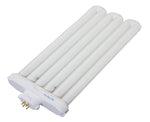

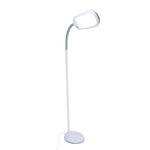

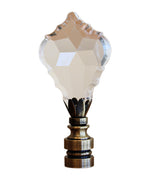

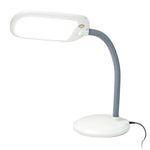


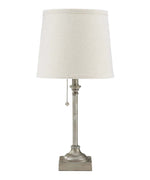


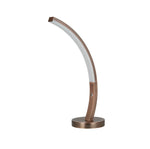




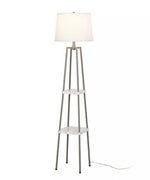













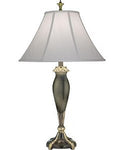

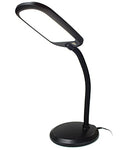


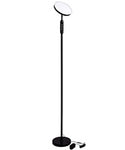

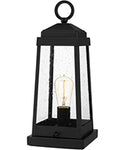
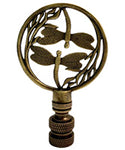
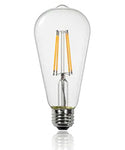
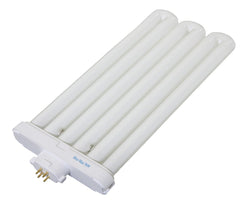
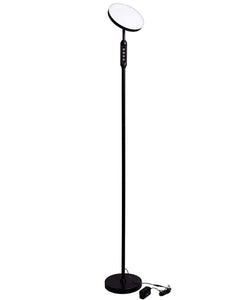
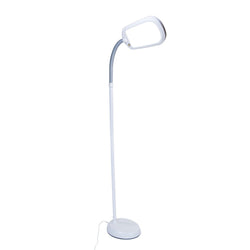
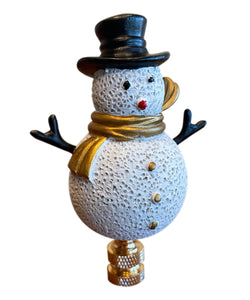
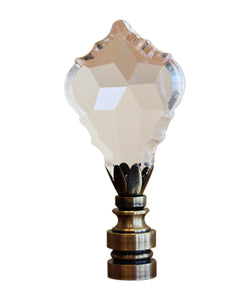
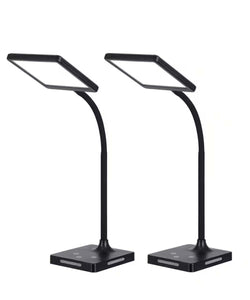


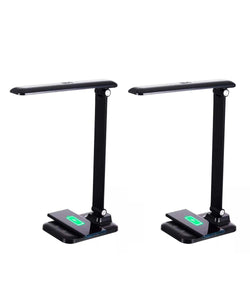

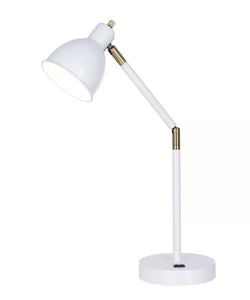
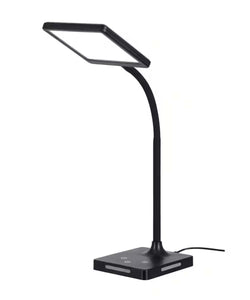



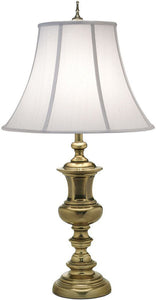
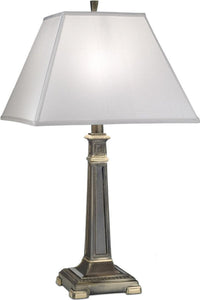
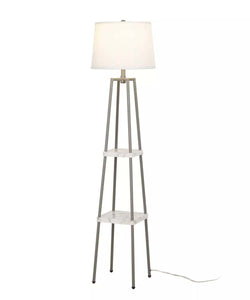
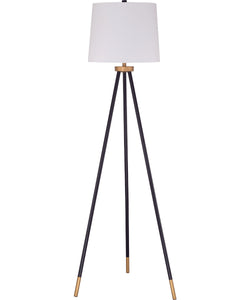

Comments